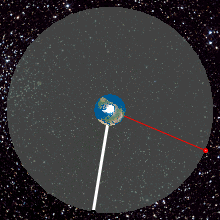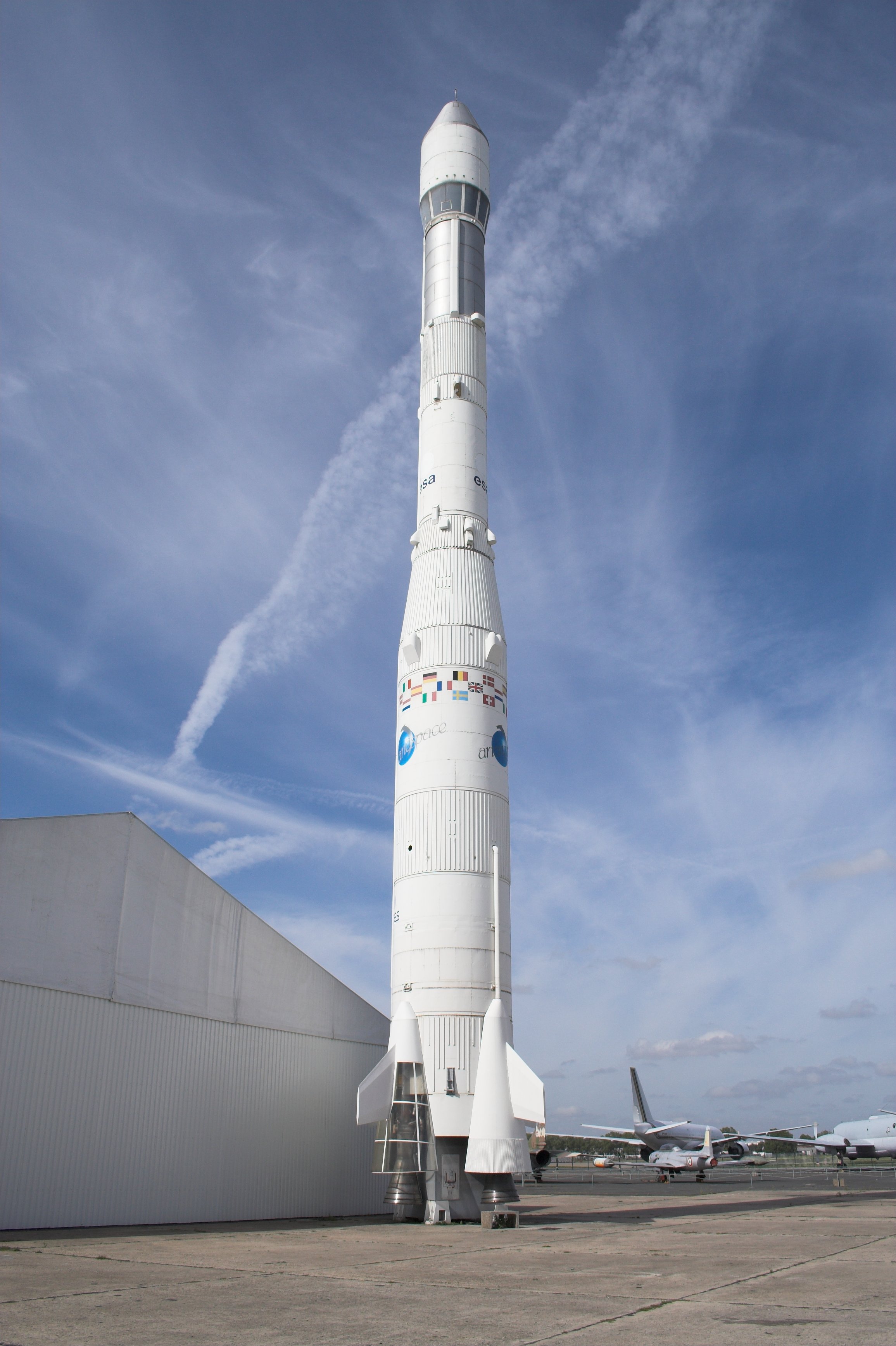|
GSAT-20
GSAT-20 (also known as CMS-03 or GSAT-N2) is a communication satellite developed by Indian Space Research Organisation (ISRO) and launched by a SpaceX Falcon 9. The GSAT-20 satellite is funded, owned and operated by New Space India Limited. The entire capacity onboard CMS-03 satellite was leased to Dish TV. GSAT-20 is a continuation of GSAT series of communication satellites. The satellite is intended to add data transmission capacity to the communication infrastructure required by Smart Cities Mission of India. Payload The satellite features a Ka-band high-throughput communications payload with throughput utilizing 40 beams offering HTS capacity of nearly . Each beam has 2 polarisations, effectively making them 80 beams. Launch The satellite was initially expected to be launched in 2024 on an LVM 3, but shifted to Falcon 9 due to the satellite being 700 kg overweight for a successful launch on indigenous platforms. Hence, the commercial arm of IS ... [...More Info...] [...Related Items...] OR: [Wikipedia] [Google] [Baidu] |
GSAT
The GSAT (Geosynchronous Satellite) satellites are India's indigenously developed communications satellites, used for digital audio, data and video broadcasting. As of 5 December 2018, 20 GSAT satellites manufactured by the ISRO, Indian Space Research Organisation have been launched, out of which 14 are in service. History The GSAT series of Geosynchronous satellite, geosynchronous satellites is a system developed by the ISRO, Indian Space Research Organisation (ISRO) with an objective to make India self-reliant in broadcasting services. The system includes a total of 168 Transponder (satellite communications), transponders (out of which 95 are leased out to provide services to broadcasters) in the C band (IEEE), C, Extended C and Ku band, Ku bands, providing services to telecommunications, television broadcasting, weather forecasting, disaster warning and search and rescue operations. List of GSAT satellites This is a list of GSAT satellites and their status. See also ... [...More Info...] [...Related Items...] OR: [Wikipedia] [Google] [Baidu] |
ISRO
The Indian Space Research Organisation (ISRO ) is India's national space agency, headquartered in Bengaluru, Karnataka. It serves as the principal research and development arm of the Department of Space (DoS), overseen by the Prime Minister of India, with the Chairman of ISRO also serving as the chief executive of the DoS. It is primarily responsible for space-based operations, space exploration, international space cooperation and the development of related technologies. The agency maintains a constellation of imaging, communications and remote sensing satellites. It operates the GAGAN and IRNSS satellite navigation systems. It has sent three missions to the Moon and one mission to Mars. Formerly known as the Indian National Committee for Space Research (INCOSPAR), ISRO was set up in 1962 by the Government of India on the recommendation of scientist Vikram Sarabhai. It was renamed as ISRO in 1969 and was subsumed into the Department of Atomic Energy (DAE). The establi ... [...More Info...] [...Related Items...] OR: [Wikipedia] [Google] [Baidu] |
Cape Canaveral Space Launch Complex 40
Space Launch Complex 40 (SLC-40), sometimes referred to as "Slick Forty," is one of two launch pads located at the Integrate-Transfer-Launch Complex in Cape Canaveral Space Force Station, Florida. It initially opened as Launch Complex 40 (LC-40) and was used by the United States Air Force alongside the neighboring Space Launch Complex 41 for the Titan III program. It initially saw use by the Titan IIIC throughout the 1960s and 1970s, before getting retrofitted for the Titan 34D during the 1980s. In the 1990s, Martin Marietta and the Air Force upgraded it to launch the Commercial Titan III, but the rocket's lack of success caused the pad to be used by the Titan IV throughout the decade and into the 2000s. Following the Titan family's retirement, the SLC-40 lease was given to SpaceX in 2007 for use by their new rocket, the Falcon 9. Since the early 2010s, the pad has transformed into a high-volume launch site for the Falcon 9, being mainly used to service the company's Starlink ... [...More Info...] [...Related Items...] OR: [Wikipedia] [Google] [Baidu] |
Communications Satellite
A communications satellite is an artificial satellite that relays and amplifies radio telecommunication signals via a Transponder (satellite communications), transponder; it creates a communication channel between a source transmitter and a Radio receiver, receiver at different locations on Earth. Communications satellites are used for television, telephone, radio, internet, and military applications. Many communications satellites are in geostationary orbit above the equator, so that the satellite appears stationary at the same point in the sky; therefore the satellite dish antennas of ground stations can be aimed permanently at that spot and do not have to move to track the satellite. Others form satellite constellations in low Earth orbit, where antennas on the ground have to follow the position of the satellites and switch between satellites frequently. The radio waves used for telecommunications links travel by Line-of-sight propagation, line of sight and so are obstructe ... [...More Info...] [...Related Items...] OR: [Wikipedia] [Google] [Baidu] |
Indian Regional Navigational Satellite System
Indian Regional Navigation Satellite System (IRNSS), with an operational name of NavIC (acronym for Navigation with Indian Constellation; also, 'sailor' or 'navigator' in Indian languages), is an autonomous regional satellite navigation system that provides accurate real-time positioning and timing services. It covers India and a region extending around it, with plans for further extension up to . An extended service area lies between the primary service area and a rectangle area enclosed by the 30th parallel south to the 50th parallel north and the 30th meridian east to the 130th meridian east, beyond borders where some of the NavIC satellites are visible but the position is not always computable with assured accuracy. The system currently consists of a constellation of eight satellites, with two additional satellites on ground as stand-by. The constellation is in orbit as of 2018. NavIC will provide two levels of service, the "standard positioning service", which will be ... [...More Info...] [...Related Items...] OR: [Wikipedia] [Google] [Baidu] |
Next Generation Launch Vehicle
The Next Generation Launch Vehicle (NGLV) is a family of three-stage Reusable launch vehicle#Partially reusable launch systems, partially reusable Medium-lift launch vehicle, medium to super heavy-lift launch vehicle, currently under development by the ISRO, Indian Space Research Organisation (ISRO). The family of these vehicles are designed to replace currently operational systems like the Polar Satellite Launch Vehicle, PSLV and Geosynchronous Satellite Launch Vehicle, GSLV. Previously referred to as Unified Launch Vehicle (ULV), the project is now being called as project Soorya. This family of three launchers were previously being designed for replacing the different core propulsion modules of PSLV, GSLV, and LVM3 respectively with a common semi-cryogenic engine and hence it was named as ULV. Unlike the latest proposal of the launcher, the initial proposals were planned to be Expendable launch system, expendable. But the new proposals under the name of NGLV suggests launcher ... [...More Info...] [...Related Items...] OR: [Wikipedia] [Google] [Baidu] |
Geostationary Orbit
A geostationary orbit, also referred to as a geosynchronous equatorial orbit''Geostationary orbit'' and ''Geosynchronous (equatorial) orbit'' are used somewhat interchangeably in sources. (GEO), is a circular orbit, circular geosynchronous orbit in altitude above Earth's equator, in radius from Earth's center, and following the retrograde and prograde motion, direction of Earth's rotation. An object in such an orbit has an orbital period equal to Earth's rotational period, one sidereal time, sidereal day, and so to ground observers it appears motionless, in a fixed position in the sky. The concept of a geostationary orbit was popularised by the science fiction writer Arthur C. Clarke in the 1940s as a way to revolutionise telecommunications, and the first satellite to be placed in this kind of orbit was launched in 1963. Communications satellites are often placed in a geostationary orbit so that Earth-based satellite dish, satellite antennas do not have to rotate to track t ... [...More Info...] [...Related Items...] OR: [Wikipedia] [Google] [Baidu] |
Ariane 6
Ariane 6 is a European expendable launch system developed for the European Space Agency (ESA) and manufactured by a consortium of European companies, led by the prime contractor ArianeGroup. As part of the Ariane rocket family, it is operated by Arianespace, replacing the Ariane 5. The project's primary contributors were France (55.3%), Germany (21%) and Italy (7.6%), with the remaining work distributed among ten other participating countries. This two-stage rocket utilizes liquid hydrogen and liquid oxygen (hydrolox) engines. The first stage features an upgraded Vulcain engine from Ariane 5, while the second uses the Vinci engine, designed specifically for this rocket. The Ariane 62 variant uses two P120C solid rocket boosters, while Ariane 64 uses four. The P120C booster is shared with Europe's other launch vehicle, and is an improved version of the P80 used on the original Vega. Selected in December 2014 over an all-solid-fuel alternative, Ariane 6 was initially planned ... [...More Info...] [...Related Items...] OR: [Wikipedia] [Google] [Baidu] |
Ariane 5
Ariane 5 is a retired European heavy-lift space launch vehicle operated by Arianespace for the European Space Agency (ESA). It was launched from the Guiana Space Centre (CSG) in French Guiana. It was used to deliver payloads into geostationary transfer orbit (GTO), low Earth orbit (LEO) or further into space. The launch vehicle had a streak of 82 consecutive successful launches between 9 April 2003 and 12 December 2017. In development since 2014, Ariane 6, a direct successor system was first launched in 2024. The system was designed as an expendable launch vehicle by the ''Centre national d'études spatiales'' (CNES), the French government's space agency, in cooperation with various European partners. Despite not being a direct derivative of its predecessor launch vehicle program, it was classified as part of the Ariane rocket family. Aérospatiale, and later ArianeGroup, was the prime contractor for the manufacturing of the vehicles, leading a multi-country consortium of othe ... [...More Info...] [...Related Items...] OR: [Wikipedia] [Google] [Baidu] |
Communication Satellite
A communications satellite is an artificial satellite that relays and amplifies radio telecommunication signals via a transponder; it creates a communication channel between a source transmitter and a receiver at different locations on Earth. Communications satellites are used for television, telephone, radio, internet, and military applications. Many communications satellites are in geostationary orbit above the equator, so that the satellite appears stationary at the same point in the sky; therefore the satellite dish antennas of ground stations can be aimed permanently at that spot and do not have to move to track the satellite. Others form satellite constellations in low Earth orbit, where antennas on the ground have to follow the position of the satellites and switch between satellites frequently. The radio waves used for telecommunications links travel by line of sight and so are obstructed by the curve of the Earth. The purpose of communications satellites is to re ... [...More Info...] [...Related Items...] OR: [Wikipedia] [Google] [Baidu] |
Arianespace
Arianespace SA is a French company founded in March 1980 as the world's first commercial launch service provider. It operates two launch vehicles: Vega C, a Small-lift launch vehicle, small-lift rocket, and Ariane 6, a Medium-lift launch vehicle, medium-to-Heavy-lift launch vehicle, heavy-lift rocket. Arianespace is a subsidiary of ArianeGroup, a joint venture between Airbus and Safran. European space launches are carried out as a collaborative effort between private companies and government agencies. The role of Arianespace is to market Ariane 6 launch services, prepare missions, and manage customer relations. At the Guiana Space Centre (CSG) in French Guiana, the company oversees the team responsible for integrating and preparing launch vehicles. The rockets themselves are designed and manufactured by other companies: ArianeGroup for the Ariane 6 and Avio for the Vega. The launch infrastructure at the CSG is owned by the European Space Agency, while the land itself belongs to ... [...More Info...] [...Related Items...] OR: [Wikipedia] [Google] [Baidu] |







